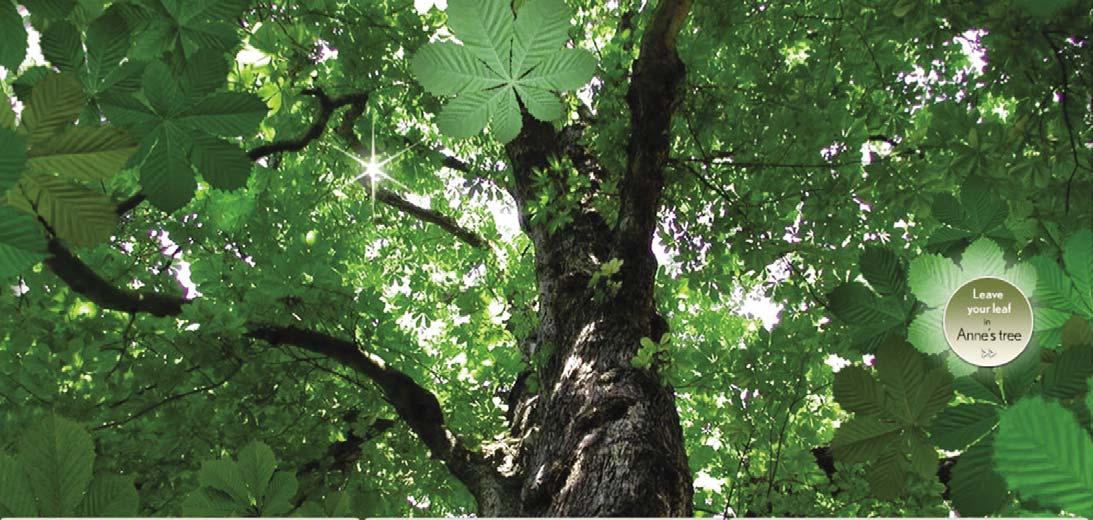
2 minute read
Reprieve for Anne Frank Tree
The internationally-famous chestnut tree that comforted Anne Frank while she hid from the Nazis has been given a last minute reprieve.

Advertisement
A Dutch judge has ruled that the tree, an inspiration to many, which was threatened with being cut down, will stay as Amsterdam officials consider possible alternatives. This was the second reprieve. It was granted one in October while the Tree Institute investigated ways to support and heal it. In the latest decision the judge stated that the tree did not pose an “acute danger” and dismissed what he termed “extreme measures”, such as cutting it down. He added the local officials had not considered all other solutions and said all sides should come together and come up with alternatives. In a bidding war on E-bay before the judge’s decision, a bid of more than $10,000 was offered for a single chestnut from the tree.
The 150-year-old chestnut, familiar to the many readers of The Diary of Anne Frank, suffered from fungus and moths that have caused more than half its trunk to rot.Thousands of people from around the world had sent protests to save the tree. While in hiding from the Nazis, Anne stayed indoors until she and her family were arrested in 1944. Anne died in Bergen-Belsen in March 1945, just before the end of WWII. The window through which Anne could see the famous tree was the only one that had not been blacked out in her Holland home.
She wrote in her internationally-renowned diary in February 1944, that from her favourite spot on the floor, she looked up at the blue sky and the bare chestnut tree, on whose branches little raindrops shone, and saw the seagulls and other birds as they glided by. “As long as this exists, I thought, and I may live to see it, the sunshine, the skies, while it lasts I cannot be unhappy,” she wrote. “Nearly every morning I go to the attic to blow the stuffy air out of my lungs.”
The Amsterdam Council said the state of this monumental chestnut was a real danger for its surroundings, including the “secret annex” atop the canal-side warehouse where the Frank family hid. “Its rapid decay makes it necessary to take action now,” they added.
In March 2007, the city council granted a license to have the tree cut down. That prompted protests by the Netherlands Tree Institute and others who argued it had such historic value that extraordinary measures should be taken to preserve it.
The tree has become a symbol of freedom, and also reminded many of the million and a half Jewish children who perished in the Holocaust, as well as children from other religions. The Anne Frank Museum, where the tiny Anne Frank apartment has been preserved is visited by men, women and children from around the world. It has become a centre for fostering understanding and an insight for many into the Holocaust.







